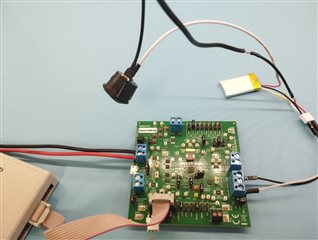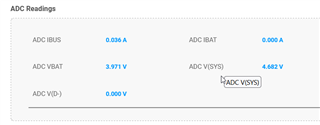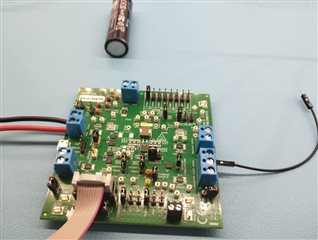Other Parts Discussed in Thread: BQ25798
Tool/software:
Hi,
I am using the BQ25798EVM with this setup:

I configured it with 1 Cell but I am having the VBAT OVP FLAG tough ADC BAT measure is 3,853V.
I can't figure out why this is a problem.
Please see attached configuration/measures:





